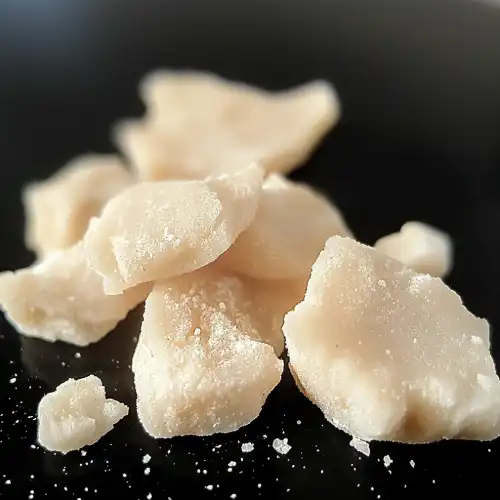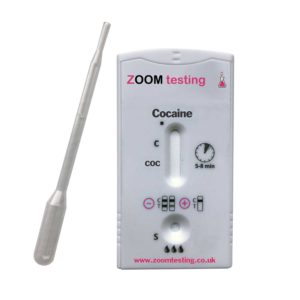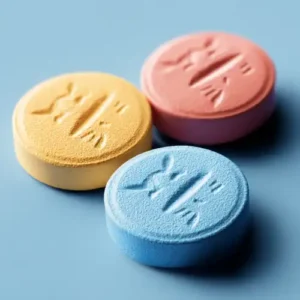Cocaine is a bitter, addictive pain blocker that is extracted from the leaves of Erythroxylon coca, also known as the coca scrub, a plant that comes from the Andean highlands in South America. Cocaine is the most powerful stimulant of natural origin. The name “cocaine” came from the plant “coca”. When Coca-Cola first came out it contained nine milligrams of cocaine per glass – in 1903 it was removed, but the drink still has coca flavouring.
William S. Halstead, an American surgeon, injected cocaine into nerve trunks and demonstrated its numbing effect. It soon became used as an anaesthetic agent. In 1898 August Bier, a German surgeon used cocaine as a spinal anaesthetic. Not long afterwards the medical profession became aware of the addictive nature of cocaine and safer anaesthetics were developed. Cocaine in its basic form stopped being used clinically as a pain blocker.
Today, cocaine is commonly used as a recreational drug. It is a stimulant-type drug, similar to speed. Cocaine is also known as coke, Charlie, draw, flake or snow.
Crack, named for its ‘crackle’ sound when heated, is a form of cocaine. Crack has been treated with chemicals to allow it to be more easily smoked. Crack is also known as pebbles, rock, stone and wash.
Britain is among the world’s biggest users of Cocaine and Crack. Other countries that have a high number of users of the drug include: USA, Spain, Australia, Netherlands, Chile and Uruguay.
What Do Cocaine and Crack Look Like?
Cocaine comes as a white powder. Cocaine is expensive so may be mixed with anything else that is white and powdery, so that the drug dealers can make a bigger profit.
Crack (or rock cocaine) comes in the form of small white crystals or rocks about the size of raisins.
How Are Cocaine and Crack Taken?
Cocaine can be:
- Snorted – inhaled through the nose. It enters the bloodstream via the nasal tissues.
- Injected – where it is released directly into the bloodstream.
- Smoking – cocaine is inhaled as vapour or smoke into the lungs, where it rapidly enters the bloodstream.
Crack is usually smoked in a pipe. Homemade pipes are likely to be found at street level made from soft drink cans or aluminium foil.
Whilst cocaine’s effects are well-documented, it’s worth noting the drug’s impact on society at large. The cocaine trade fuels organised crime, corruption, and violence across the globe. From South American coca farms to UK street corners, the industry leaves a trail of devastation.
Moreover, cocaine use strains healthcare systems and emergency services. Paramedics often respond to overdoses, whilst A&E departments treat cocaine-related heart problems and mental health crises. The ripple effects touch families too, with relationships strained and children neglected due to addiction.
Economically, cocaine abuse costs billions in lost productivity, crime, and healthcare. It’s a complex issue that affects us all, even if we don’t use the drug ourselves.
How Are Cocaine and Crack Taken?
Cocaine will give you a confidence buzz for about 30 minutes, leaving you craving more. Cocaine and crack both produce feelings of well-being, alertness, reduced appetite and physical strength.
Cocaine is a strong stimulant that interferes with the way the brain processes chemicals called neurotransmitters. One of these is dopamine, which regulates pleasure. Cocaine prevents the reabsorption of dopamine, causing a buildup of the chemical in the brain. This buildup causes the invigorating but short-lived euphoric high.
When the effects wear off, dopamine levels quickly drop below normal, leading to depression and edginess. This crash explains why users often take the drug repeatedly to try to maintain the high.
In the short-term, cocaine can cause:
- Euphoria and supreme confidence
- Mental alertness and hypersensitivity
- Reduced fatigue
- Reduced appetite
- Increased body temperature, heart rate and blood pressure
However, even recreational doses have adverse effects, including:
- Agitation and restlessness
- Anxiety and paranoia
- Headache and abdominal pain
- Stroke
- Seizures
- Heart attack
Prolonged cocaine snorting can result in ulceration of the mucous membrane of the nose. Injecting cocaine with unsterile equipment can transmit HIV, hepatitis and other infections. Preparation of freebase cocaine (‘crack’) can result in serious explosions.
Those who become addicted may experience financial difficulties, depression, mood disturbances, sleep problems and paranoia. Cocaine withdrawal symptoms include fatigue, insomnia and depression. A user may experience these symptoms for weeks after stopping use.
Long-term, heavy use can cause permanent damage such as:
- Loss of sense of smell
- Nasal damage and trouble swallowing from snorting
- Significant weight loss
- Memory loss
- Movement disorders (e.g. Parkinson’s disease)
Is Cocaine Addictive?
Yes, cocaine is highly addictive. Users quickly develop a tolerance, needing more of the drug to get the same high. Prolonged cocaine snorting leads to addiction in around 17% of users. Smoking crack cocaine is even more likely to cause addiction – nearly 50% of users become addicted.
People who become addicted compulsively seek the drug, often bingeing on it for days at a time until they have depleted their resources. Even after stopping, psychotic-like paranoia, agitation and depression can linger for months. The risk of relapse also remains high.
What Is the Legal Status of Cocaine and Crack?
Cocaine and crack are Class A drugs under the Misuse of Drugs Act. Possession can result in up to 7 years in prison, an unlimited fine or both. Supply and production carries tougher penalties of up to life imprisonment.
Despite being illegal, cocaine remains widely available across the UK. Purity levels are high, while street prices have dropped over the last 20 years, feeding addiction. The average purity of a gram of cocaine is around 60%, double that of the 1990s. Prices have fallen from £74 per gram in 1990 to just £40 in 2020.
In 2020/21, over 4% of adults aged 16-59 reported using cocaine in the past year, over double the level in 2011/12. Hospital admissions with cocaine-related mental health issues have risen 76% over the last decade. Cocaine was mentioned on death certificates of over 700 people in 2020, higher than any year since records began in 1993.
Cocaine-related crime is also rising sharply. Around half of those starting treatment for crack addiction report committing crime to get money for drugs.
Drug Tests That Detect Cocaine
Cocaine can be detected by a number of different drug tests. The most common is a urine drug test for Cocaine. Saliva drug tests for Cocaine are also widely used. The police will often use a presumptive test for Cocaine – this is used to identify substances that are found and that are believed to be Cocaine or Crack.
Our Recommended Product
Looking for a reliable way to test for cocaine use? We recommend our Professional Cocaine Urine Test Kit. This easy-to-use kit gives you results in just 5 minutes with 99% accuracy. Each test can spot cocaine use from the past 3-5 days.
What makes this kit stand out:
- Clinical-grade testing quality
- Clear, easy-to-read results
- Meets international SAMHSA/NIDA standards
- 18-month shelf life
- Made in Europe to strict quality controls
- Detects cocaine at 300 ng/mL
- Perfect for workplace testing
- Ideal for treatment programmes
- Professional use approved
Each kit comes with clear instructions and everything you need to perform the test.
Photo by Anthony Cunningham for Zoom Testing
Zoom Testing is a leading UK drug testing company and a supplier of Drug Test Kits.
This post was originally published in 2018. It was last updated in February 2025.






